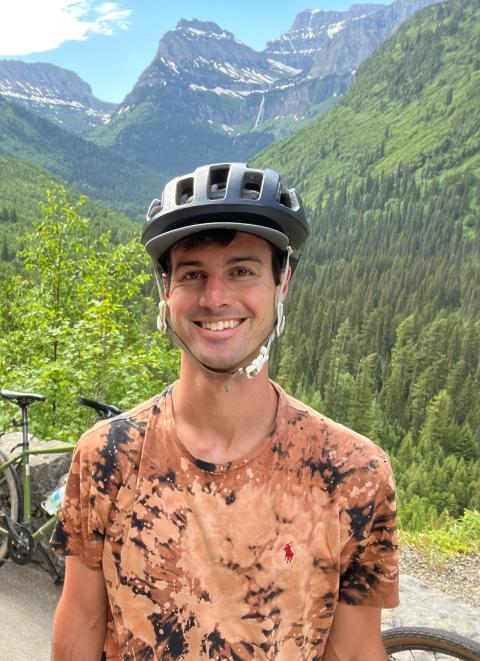
October 2, 2023
This time, we've interviewed:
In the meantime, here's the story Tyler shared with us, in his own words!
Can you tell us about what you’ve been up to since SCARP?
Since leaving SCARP, I moved to New York City and started working with the Department of Housing Preservation and Development (HPD) as a pre-development planner. In this role I get to work on many projects related to how the agency conducts community engagement and plans for affordable housing.
But my primary role is as a project manager for our request for proposals (RFP) process to develop City-owned land. These development projects are unique because they include 100% affordable housing and community facilities. Our process begins with engaging the community to hear about their ideas for how the site should be used. We use this input to help craft the RFP, which development teams will then respond to with project proposals. We review those proposals and select the winning project to be built on the site.
It isn’t often you see a development that includes only affordable homes and this is only possible because the City provides land to the developers essentially for free. How cities use land, one of their most valuable resources, was an interest of mine throughout my studies. When finishing up my degree, I wrote in my capstone portfolio that I hoped to work at the intersection of planning and development and I feel extremely lucky to have landed in a place where I get to help facilitate this process. In particular, having the autonomy to push for increased public participation and input on what gets built in our city has been an incredibly rewarding but challenging aspect of the work.
Helping plan for the creation of something as concrete as a building is really satisfying because one day there will be this physical thing that will be proof of the work and role I was able to play in the process. Single buildings may only be a drop in the bucket necessary to address our housing crisis, but for someone in the community it makes all the difference. It can allow someone to afford to stay in the city close to their work, family, and friends or to move to a new neighborhood with more resources and amenities. I’m happy to play my part as a small cog in the great machinery that is city government, serving my community.
Helping plan for the creation of something as concrete as a building is really satisfying because one day there will be this physical thing that will be proof of the work and role I was able to play in the process... For someone in the community it makes all the difference. It can allow someone to afford to stay in the city close to their work, family, and friends or to move to a new neighborhood with more resources and amenities.
What's been your proudest accomplishment so far?
When I started at HPD, our office was looking to revamp how we do community engagement for our City-owned sites. I was lucky enough to be brought into that process and get to help craft how we approach communities and how we are trying to increase their influence over the process of developing housing. For my own projects, I lead this engagement process, which has allowed me to push for increasing the amount of outreach we do. This requires a lot of extra work with more events and coordination but is worth it to know that I’m helping community members’ voices to be heard.
Tell us about how you found out about SCARP.
What was it that SCARP offered or represented that attracted you?
Vancouver is recognized around the world for being a beautiful city and for the planning that helped shape it. There is definitely a lively and honestly accessible planning community in Vancouver. SCARP helps connect you with that professional community by offering a variety of courses taught by planning professionals who bring their unique real-world experiences with them. Being exposed to people working in so many different roles as planners shows you just how wide the career options can be, even if it may make you question who really is a “planner”?
There is definitely a lively and honestly accessible planning community in Vancouver. SCARP helps connect you with that professional community.
What aspects of your education at UBC have best prepared you for your work nowadays?
I think a lot of people are worried about gaining the technical skills necessary to work in professional spaces once they graduate. While those skills are definitely needed, as a newcomer to the field of planning the foundational courses in theory and practice are what I find I need to rely on every day. It’s true you need “marketable skills” to help land that dream job, but having a strong understanding of your own planning theory and best practices helps you use those skills appropriately in your daily work. It’s easy to get caught up trying to just get things done and forget to always look at what you’re doing with a critical eye.
What advice do you have for new students at SCARP?
Not to sound cliché, but it kind of is what you make it. There is quite a bit of room to explore what the field of planning has to offer at SCARP and really knowledgeable professors to help guide you through it all. Explore your interests and take classes on a lot of different topics. I think a lot of students come in with an idea of what they want to do and along the way fall in love with something totally different. You have the opportunity to see what all the world of planning has to offer and decide what it is you are really passionate about.


